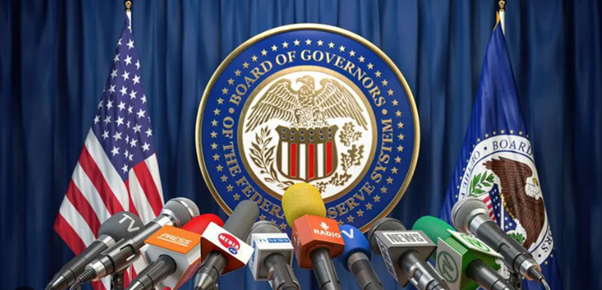US Interest Rates and Federal Reserve
The US Federal Reserve cut US interest rates last week, for first time since December 2024 and puts the target range for its main lending rate at 4% - 4.25%
Speaking to journalists, US Federal Reserve Chairman Jerome Powell stated "the balance of risks has shifted" toward the employment side of the Fed's mandate, whereas the risks had previously been tilted toward inflation.
In their announcement, Fed officials indicated they expect two more 0.25% rate cuts this year.

What Happens When US Federal Reserve Chairman Jerome Powell Leaves next year?
Jerome Powell’s job as Chair of the U.S. Federal Reserve (the Fed) ends in May 2026. The Chair sets the tone for America’s interest rate policy, which affects borrowing costs, the economy, and bond markets worldwide. President Trump will pick the next Chair, and markets are already paying attention to who that might be.
Trump has often said Powell kept interest rates too high and hurt growth. He is expected to choose someone who supports lower rates and is more in line with his economic priorities. This could mean big changes for the Fed’s independence and how investors view the future of U.S. monetary policy.
Why It Matters
The Fed’s job is to balance two things: keeping inflation under control and supporting growth and jobs. Powell has been seen as relatively balanced — willing to cut rates when needed but also firm about fighting inflation. A new Chair chosen by Trump might lean more heavily toward cutting rates faster and deeper.
Markets care about two things in this moment:
- What happens to short-term rates. If the Fed looks set to cut rates quickly, short-term government bonds (like 2-year Treasuries) will rise in price as yields fall.
- What happens to long-term confidence. If investors believe the Fed will be too political and let inflation drift higher, they will demand higher returns on 10- and 30-year bonds. That pushes long-term yields up.
Possible Outcomes
- Dovish but credible choice. If Trump picks someone who wants lower rates but still respects inflation risks, the market could rally. Short-term borrowing costs fall, and bond markets stabilize.
- Political choice that worries investors. If the nominee is seen as more loyal to Trump than to data, markets could fear higher inflation. Long-term bond yields rise, the curve steepens (short rates down, long rates up), and market volatility increases.
- Safe, moderate choice. If Trump surprises with a centrist nominee, markets may not move much, seeing continuity with Powell’s balanced approach.
Impact on Investors and Borrowers
- Short-term bonds and cash: Could rally if rate cuts look more likely. Good for holding shorter-duration assets.
- Long-term bonds: Risky if inflation fears rise. Investors may want protection against higher yields.
- Credit markets (corporate bonds, loans): Could benefit from easier policy at first, but if inflation fears grow, borrowing costs could climb again.
- Global impact: A weaker U.S. dollar from easier policy could help emerging markets, but sudden swings may also raise risks abroad.
What to Watch
- Nominee’s background and speeches. Do they emphasize independence and inflation control, or political loyalty and growth at any cost?
- Senate confirmation hearings. Markets will react to language around inflation, jobs, and independence.
- Inflation expectations. Watch 5-year/5-year inflation swaps and bond market signals for whether investors trust the Fed.
Conclusion
Powell leaving is not just a personnel change — it’s a turning point for how the Fed is viewed. A Trump-picked Chair who pushes fast rate cuts could boost growth in the short run, however may raise inflation risks and bond volatility.
The replacement of Powell is as much about trust in the Fed as it is about the level of rates. That trust will decide how smooth or rocky bond markets become in 2026.
Copyright © 2025 Coastline Private Wealth, All rights reserved.
Our mailing address is:
PO Box 2082
Churchlands WA 6018







